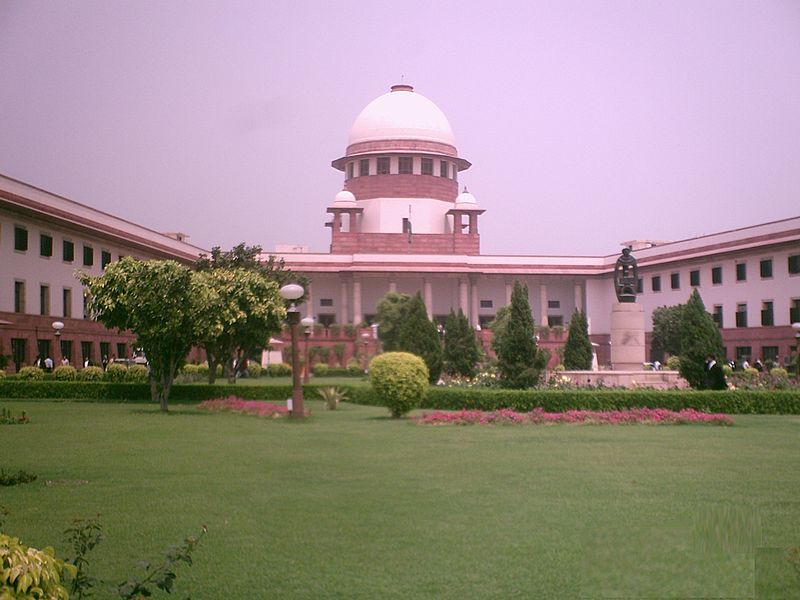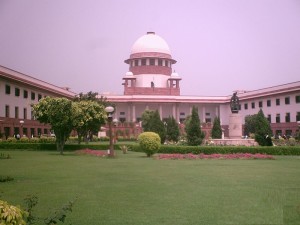This article is written by Poonam Bera.
Recently, in the case of Anvar P. K. vs. P.K Basheer & ors. (dated 18 September, 2014), Supreme Court overruled the statement of law on admissibility of secondary evidence pertaining to electronic record, as held by the court in case of State (NCT of Delhi) v Navjot Sandhu alias Afsal Guru (2005) 11 SCC 600 .
Supreme court in case of Anvar P.K vs. P.K Basheer & ors., further explained the position by saying that “an electronic record by way of secondary evidence shall not be admitted in evidence unless the requirement under section 65 B are satisfied. Thus in case of CD, VCD and chip etc., the same shall be accompanied by the certificate in term of section 65B obtained at the time of taking the document, without which the secondary evidence pertaining to that electronic record is inadmissible.”
Presentation of electronic evidence as secondary evidence under Evidence Act
Section 65 B of Indian Evidence Act 1872 provides notwithstanding anything in this act, any information contained in an electronic record which is printed on a paper, stored, copied in optical or magnetic media produced by the computer shall also be deemed to be a document, if the conditions mention in subsection (2) satisfied.
These conditions are: condition in respect of computer output shall be:
(a) electronic record containing the information should have been produced by computer during the period over which the same was used regularly to store or process the information for the purpose of any activity regularly carried on over that period by the person having lawful control over the use of computer.
(b) Information of the kind contained in the electronic record or of the kind from which the information so contained is derived was regularly fed into the computer in the ordinary course of the said activity.
(c ) During the material part of the said period, the computer was operating properly or; if not then in respect of any period in which it was not operating properly or was out of operation during that part of period, was not such as to affect the electronic record or the accuracy of its content.
(d) The information contained in the electronic record reproduced or is derived from such information fed into the computer in the ordinary course of the said period.
Section 65 B (4) provides the certificate, which identified the electronic record containing the statement and described the manner in which it was produced giving the particulars of the device involved in the production of records and deals with the conditions mentioned in section 65B (2) and is signed by the person occupying a responsible official position in relation to the operation of the relevant device shall be evidence of any matter stated in the certificate.
Judgments by Supreme Court
Supreme court in its previous judgment in the case of State (NCT of Delhi) v Navjot Sandhu alias Afzal Guru 2005 held that irrespective of the compliance with the requirement of the section 65B, which has a special provision dealing with the admissibility of the electronic records there is no bar in adducing secondary evidence under section 63 and 65, of an electronic record. Section 63 merely provides that secondary evidence means and includes “copies made from the original by mechanical process which in themselves ensure the accuracy of the process and copies compared with such copies.”
Following the principle of that generalia specialibus non derogant, which means special law will always prevail over general law, court in case of Anvar P.K vs. P.K. Basheer & ors has overruled the holding of Afzal Guru’s case and held inadmissibility of the CD’s as these electronic evidence produced without the compliance of the requirement of the section 65B. Here the special provision of the law is the section 65B of the Indian Evidence Act 1872.
The judgment in Anvar’s case signifies the concern of our judiciary on reliability of the electronic evidences. The new approach set up by the court is that the general law relating to secondary evidence is not applicable in electronic evidence. Electronic records being more susceptible to tampering and alteration so if the electronic records, which is not complying with the special provision of the Indian evidence act that is section 65B, may led to the travesty of justice.
After the Anvar case, for the presentation and admissibility of any electronic evidence like computer data, CD, VCD, chip any other digital record, there is mandatory necessity to comply with section 65B of the Act.
 Serato DJ Crack 2025Serato DJ PRO Crack
Serato DJ Crack 2025Serato DJ PRO Crack











 Allow notifications
Allow notifications




A critical study-Decision rendered by the Hon’ble Supreme Court on 18-09-2014 in CIVIL APPEAL NO. 4226 OF 2012 Anvar P.V. … Appellant (s) Versus P.K. Basheer and others … Respondent (s)
———–Mahesh Bhatt Advocate Udaipur (Rajasthan)
1. In our day to day affairs we come across a series of electronic records and it is now impossible to expect present day living without it. Travel bookings, admissions to universities and colleges, money transfer, electronic contracts, communication, Hospitals and nursing homes, education, share market, Banks and financial institutions, Photography, Videography, Government tenders, Business-world everywhere we are getting more and more dependent on Internet and wireless technology. There is a long list and above mentioned is only illustrative as the complete list shall consume the entire space in this small article. These services have given rise to a new category of documents and we legally call them the Electronic records.
2. The law on the point of admissibility of an Electronic record is in nascent stage and the courts are making their sincere efforts to apply it properly. The Evidence Act has been amended to introduce the admissibility of an Electronic record.
3. In Anvar’s case admissibility of an electronic record was questioned on the point of requirement of a certificate as provided in sub-section (4) of section 65B of the Evidence Act and while upholding the objection it is observed by the Hon’ble SC in its Judgment that:
“Any documentary evidence by way of an electronic record under the Evidence Act, in view of Sections 59 and 65A, can be proved only in accordance with the procedure prescribed under Section 65B. Section 65B deals with the admissibility of the electronic record. The purpose of these provisions is to sanctify secondary evidence in electronic form, generated by a computer. It may be noted that the Section starts with a non obstante clause. Thus, notwithstanding anything contained in the Evidence Act, any information contained in an electronic record which is printed on a paper, stored, recorded or copied in optical or magnetic media produced by a computer shall be deemed to be a document only if the conditions mentioned under sub- Section (2) are satisfied, without further proof or production of the original.”
(Emphasis supplied by me)
4. With all respects for the Judgment, it seems section 65-B, which is reproduced in a previous Para of the Judgment, has been misread. A bare look at the section reveals that the section doesn’t start with a non obstante clause, on the contrary it is the sub-section (1) of section 65B, which starts with a non obstante clause. There is a world of difference in saying that “section 65 B starts with a non obstante clause” and “sub-section (1) of section 65 B starts with a non obstante clause”. When the section doesn’t start with a non obstante clause in my humble opinion it is doubtful whether the findings arrived at in the decision can be said to have been based on correct interpretation of the law.
5. It is humbly submitted that in the light of the Judgment of the Hon’ble SC, in Anvar’s case, section 65-B stands redrafted as follows:-
“65B. Admissibility of electronic records: Notwithstanding anything contained in this Act:-
(1) (—————————————————) any information contained in an electronic record which is printed on a paper, stored, recorded or copied in optical or magnetic media produced by a computer (hereinafter referred to as the computer output) shall be deemed to be also a document, if the conditions mentioned in this section are satisfied in relation to the information and computer in question and shall be admissible in any proceedings, without further proof or production of the original, as evidence of any contents of the original or of any fact stated therein of which direct evidence would be admissible.
(Emphasis supplied)
6. Whereas the section 65B is worded as follows:-
“65B. Admissibility of electronic records:
(1) Notwithstanding anything contained in this Act any information contained in an electronic record which is printed on a paper, stored, recorded or copied in optical or magnetic media produced by a computer (hereinafter referred to as the computer output) shall be deemed to be also a document, if the conditions mentioned in this section are satisfied in relation to the information and computer in question and shall be admissible in any proceedings, without further proof or production of the original, as evidence of any contents of the original or of any fact stated therein of which direct evidence would be admissible.
(Emphasis supplied)
7. When there is a non-obstante clause in the beginning of any section it applies to the entire section including its sub-sections. If it is positioned in a particular sub-section then the clause provides strength to that particular sub-section in its application. That is the normal rule of Interpretation of a non-obstante clause in any legislation. In section 65B the non obstante clause is positioned in the beginning of sub-section (1) and not in the beginning of the section as observed in the Judgment. This observation goes to the root of the matter and makes the correctness of the decision debatable.
8. When sub-section (1) of Section 65B begins with a non-obstante clause notwithstanding anything contained in this Act, the word “Act” appearing in the non-obstante clause means and denotes “notwithstanding anything to the contrary contained in this Act”. If there is anything contrary to what has been provided in sub-section (1) in the Evidence Act or even in the other sub-sections of section 65B it has to be ignored and all due regard be paid to sub-section (1).
9. The manner in which sub-section (4) has been enacted it is contrary to what has been enacted in sub-section (1). Appearance of a non-obstante clause in the very beginning of sub-section (1) denotes that the provisions contained in sub-section (1) shall have an overriding effect to the exclusion of all other provisions of the Indian Evidence Act including what has been provided for in sub-section (4). In sub-sections (2) (3) and (5) there is nothing which can be said to be contrary to sub-section (1).
10. Therefore there is no need to refer to sub-section (4) in order to apply or understand the admissibility of any document mentioned in sub-section (1). Sub-section (1) is a complete code in itself. To the exclusion of sub-section (4) electronic record mentioned in sub-section (1) gains recognition as an electronic record.
11. To conclude, it is submitted that the special position allotted by the legislature to the non-obstante clause is in the beginning of sub-section (1) and not in between the words appearing in section 65B “Admissibility of electronic records” and numeral (1), so as to cover sub-section (4). So I have reason to assert that the non obstante clause includes sub-section (4). If the non obstante clause includes sub-section (4) then it is not required to procure a certificate to prove and make admissible any document covered by sub-section (1).
IN ANY CASE DURING TRIAL AFTER ONE YEAR FILING THE CHARGESHEET, WHEN DEFENCE RAISE POINT TO THE COURT THAT DUE TO NO 65B CERTIFICATION THE ELECTRONIC RECORD I.E.CD SHOULD NOT BE ADMISSIBLE IN THE COURT AND VERY NEXT DAY PROSECUTION FILED 65B CERTIFICATE TO THE COURT OF THE SAME DATE(ONE YEAR AFTER THE FILING OF CHARGESHEET).WHETHER IT IS LEGALY CORRECT OR NOT.
Please correct the cause title. It is incorrect.
Thanks for pointing it out. We have corrected it.